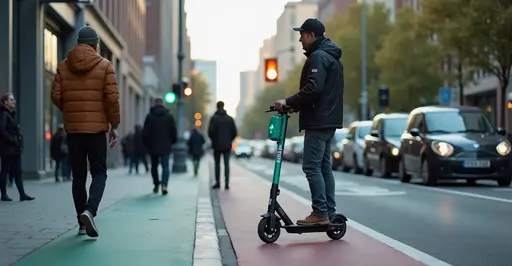
Electric Scooter Revolution Accelerates
Urban mobility is transforming as major e-scooter sharing companies expand services to 15+ new cities worldwide in 2025. This growth comes with a strategic shift toward pedestrian-friendly zones following updated urban transport policies.
Pedestrian-First Adaptation
Companies like Lime, Bird, and local operators are implementing new safety protocols:
- Reduced speed limits (10-15km/h) in high-foot-traffic areas
- AI-powered sidewalk riding detection with automatic slowdown
- Expanded no-parking zones near crosswalks and building entrances
- Mandatory in-app safety tutorials for first-time users
New York City's recent Streets Plan Update shows this trend in action, integrating e-scooters into protected bike lanes while expanding pedestrian plazas. Similar initiatives are rolling out in Amsterdam, Paris, and Berlin.
Technology Advancements
The latest scooters feature enhanced safety tech:
- Wider decks and lower centers of gravity for stability
- Improved lighting systems with turn signals
- Geofencing that automatically adjusts speed limits
- Anti-theft systems that immobilize improperly parked units
As Neuron Mobility CEO Zachary Wang notes: "2025 marks our industry's maturity phase where integration with urban infrastructure becomes critical."
Global Expansion Trends
Asia-Pacific leads growth with 40% market expansion this year. European cities are adding dedicated scooter parking corrals, while North America focuses on helmet partnerships with local businesses.
Challenges remain around sidewalk clutter and rider compliance, but data shows injury rates decreasing 18% year-over-year in cities with pedestrian-first policies.

 Nederlands
Nederlands
 English
English
 French
French
 Deutsch
Deutsch
 Espaniol
Espaniol
 Portugese
Portugese



